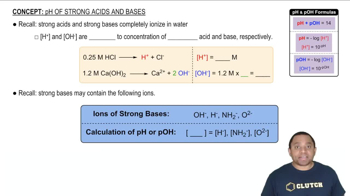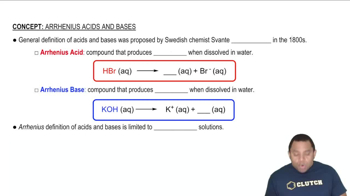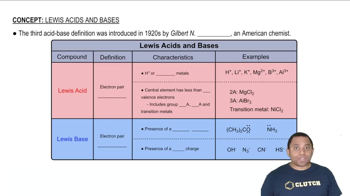Here are the essential concepts you must grasp in order to answer the question correctly.
Acidity and pH
Acidity refers to the ability of a substance to donate protons (H+) in a solution, which is quantitatively measured by pH. A lower pH indicates a higher concentration of hydrogen ions, thus a stronger acid. Understanding the pH scale is essential for comparing the acidity of different compounds.
Recommended video:
pH of Strong Acids and Bases
Oxidation States and Acid-Base Behavior
The oxidation state of an element in a compound can influence its acid-base behavior. Generally, higher oxidation states in nonmetals lead to stronger acids due to increased electronegativity, which stabilizes the negative charge of the conjugate base formed after proton donation. This concept is crucial for evaluating the acidity of oxides.
Recommended video:
Arrhenius Acids and Bases
Lewis Acids and Bases
Lewis acids are defined as electron pair acceptors, while Lewis bases are electron pair donors. This broader definition of acidity allows for the classification of compounds that may not fit traditional definitions. Understanding this concept helps in analyzing the reactivity and acidity of various oxides in the question.
Recommended video:
 Verified step by step guidance
Verified step by step guidance

